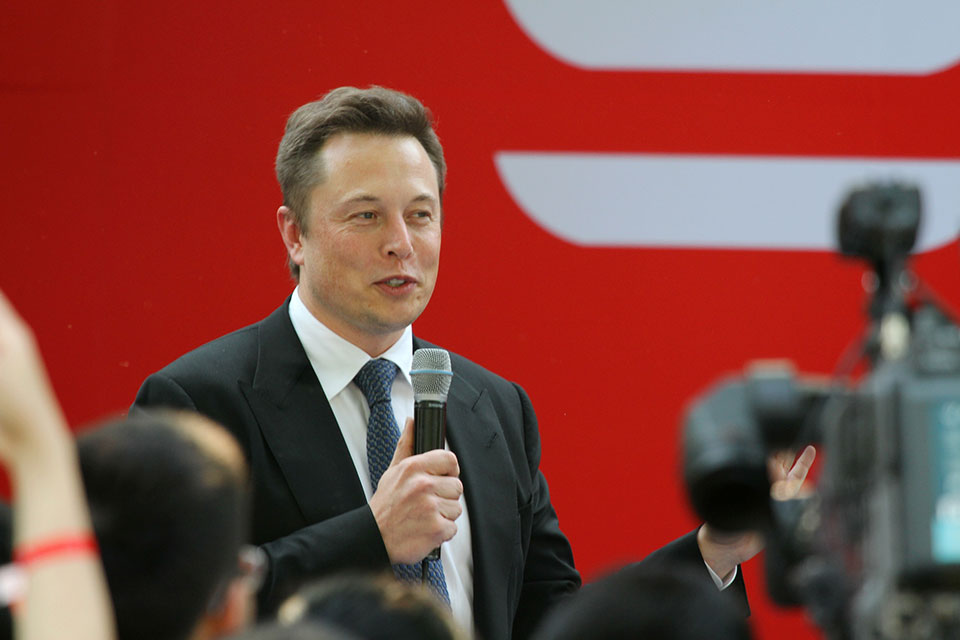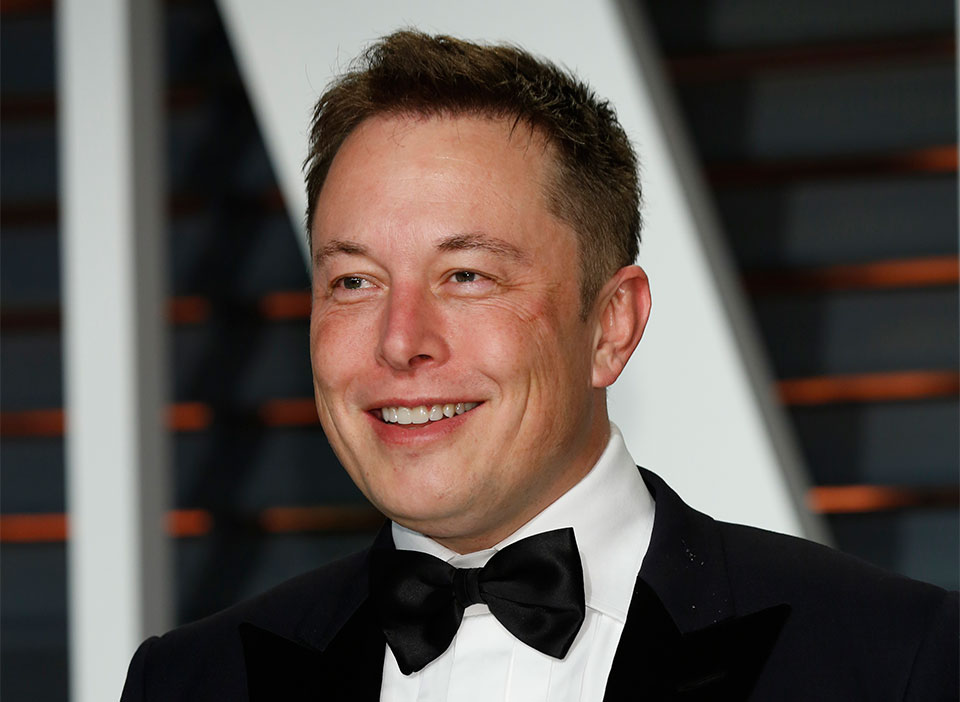Elon Musk: A Case Study of The World’s Richest, Influential, And Most Controversial Man

There is no better word to describe Elon Musk, than an ‘entrepreneur’. To Musk, entrepreneurship is more of a personality guided by high intellectual character and proper management skills. The success story of Elon Musk does not depict more of an employee in him, but a creator, manager, and developer of economy-based giant investments.
His story rather presents a personality that has high potential in the identification and evaluation of investment opportunities which makes him a visionary and innovative business person. Through the success story of Elon Musk, this study also deduces significant behavioral patterns of an entrepreneur that made him the man he is today.
The success story of Musk also explores a huge number of challenges and a strong will pitted to overcome them with time to become the second richest man on the planet. This study exclusively explores Elon Musk, the Chief Executive Officer of Tesla, his background, academic, and professional work experience with an expression of how he overcame challenges.
The far Elon Musk has come, there must have been a motivation that moved him from one investment and workplace to another. Musk is an expansionist in the sense that for humanity and life to get easier, there must be more than one option for everything in the world and that includes the planet itself. According to Mair (17), Musk was largely dissatisfied with the cost of rocket launches and that is the same reason he came up with Space X (Space Exploration Technologies in the year 2002.
Musk is an original citizen of South Africa and that is where his story begins; he left South Africa for Queens University in Canada in 1989 and avoided a mandatory service for the South African Army. It was also easier for him to obtain American citizenship while in Canada, which he obtained in 2002. Transferring from Queens University in Ontario to the University of Pennsylvania in the United States was his best shot to get to who he wanted to become. Most importantly is that Musk’s story is founded on a strong academic background, a Bachelor’s Degree in Physics and Economics before he realized that the internet was more important to him than school.
The first successful instance was in 1995 when he founded the Zip 2 company. The new company provided business directories for the American media companies, especially online newspapers and also maps. Zip 2 did exemplarily well and in 1999, it was bought by Compaq the then computer manufacturer, at $307 million which means, Musk had to move on to the next chapter of his career. The early years at Zip 2 as per Archwell (6) were hard for Musk and the company at large because it was not doing for the lack of funding from investors; to cut down the costs, the staff even had to live on the business premises.
The worst part is that the company had leadership wrangles, for instance, Musk was thrown out of the office of the Chief Executive Officer in 1996 over a disagreement on the company principles and rules. However, Archwell (7) comments that the success story of Elon Musk at this point shows that knockbacks did not make him back down; they only developed his resilience and that is what makes his present position. Thereafter, Musk founded X.com which transformed to PayPal and specialized in electronic money transfer. Although PayPal still exists today and in good form, it is part of the larger success story of Elon Musk.
Getting to the position he is now, has not been easy for Musk, at PayPal, the public did not receive the company and its business ideas well. Strauss (13) states that 1999 saw PayPal voted as the worst business concept of the year; a devastating development in a new company with huge potential. Therefore, Musk and his co-founder Levchin scrapped everything else that the company was involved in and focused on the electronic wallet and this made the company proceed well until the 2002 breakthrough.
The company at this point received funding and went public but shortly after that, Saint-Martin (9) records that eBay bought the company at $1.5 billion in the same year after watching slowly grow to the taste of millions of American citizens and companies. Note that this is the same year that Elon Musk transitioned and became a citizen of the United States and also had to move on from PayPal to something else. At this time, Musk lived in California because he had even enrolled at Stanford University for another academic pursuit. This is when the long-time dream of expansionism for humanity returned and Elon Musk went forward to partner with a few other entrepreneurs to start Tesla.
The actual motivation for the foundation of Tesla was from a Serbian investor who wanted to change the world of transport at the beginning of the century. When Musk joined Martin Eberhard and Marc Tarpenning at Tesla in 2004, as in Muegge (21) he became the controlling investor and took the company through the foundational financial year. Later as per Dzialo (39), he rose to the position of chairman of the board of directors and contributed largely to the company’s first project rolled out in 2006 where the company spent over $7.5 million.
The success story of Elon defines a person who believed a lot in Tesla. Therefore, he drove the mission to change the public opinion of electric cars; an idea that attracted affluent investors and companies that wanted to emulate his technological perspective to a better world. At Tesla, Musk managed to drive the company to more competitive markets and consumer acceptance due to the lower price ranges of the products it was powering into the markets.
The first achievement that comes with the Musk success story at Tesla is the rollout of the Roadster that hit the news as a prototype in 2006 and finally hit the market in 2008. Musk understood that once the new type of car got out into the market, the company would be able to understand and take statistics on what they need to do to change the transport system. Although as per Bilbeisi (4) the Roadster did not do well as expected by the company, it served the public well in terms of realizing and accepting the change; they learned that electric cars were not just boring and slow cars but a reliable mode of movement.
Therefore, in 2009 as pr Mair (6), Musk pushed Tesla to power a new car into the market, the Model S and this is one car that hyped the fame of the company across the United States and to the world. Just as Musk faced criticism and failure in the previous investments and collaborations, Tesla was not doing so well in the early years either. At the time that Musk was contemplating producing Model S, Tesla was going bankrupt and many sources cited that the company was on the brink of collapse, so he powered his wealth because he believed in his project. With little help from his friends, corporates, and banks, Musk helped Tesla move forward.
Musk did not forsake Space X because it held his dream, getting to space and creating more room for the establishment of a human colony out there. In 2006, the company launched the first affordable rocket named Falcon 1 and later launched Flacon 9; all this he did was in a bid to reduce the cost of visiting space. In 2018, as per Muegge (21) Space X launched a more advanced rocket named Falcon Heavy crafted to lift up to 117, 000 pounds and outsmarted the original rocket launcher Boeing Company which produced the Delta IV Heavy. Producing a rocket that could lift to 53,000 kilograms into space as per Muegge (23) means that Musk contributed to the development of a machine that could lift twice as much compared to what the Boeing company has done. On the lookout to reduce the expense, Musk’s success is also characterized by the need to reuse which means that the Space X technology rockets are reusable. As the chief engineer in the production of the Grasshopper and the Dragon rockets, Musk contributes largely to the cutting of costs by the United States’ NASA in its space explorations.
Conclusion
The story of Elon Musk is an inspirational tour, and despite the challenges that come with his professional and personal life, he is depicted as a person who does not let go off easily. He possesses all the possible characters of an office and field leader based on his ability to navigate various business deals, property management, and corporate development. The story of Elon Musk cannot be underrated whatsoever, especially when it comes to exploring how his intellect is outstanding. This shows that this is an authentic person with huge potential given the support he requires to change the world. From the first investment to the current enterprise, Musk’s nature is depicted as relentlessly insightful with high problem-solving skills. Rising from South Africa’s apartheid rule, the early storyline of Elon Musk explains a person determined to bridge the gap between formality and looking for a bright future and this served him well. In any case, he would just join the military and commit his life to South African apartheid.
References:
Archwell, Daniella, and Johnson Mason. “EVALUATING CORPORATE LEADERSHIP IN THE UNITED STATES: A REVIEW OF ELON MUSK LEADERSHIP.” African Journal of Emerging Issues 3.2 (2021): 1-10.
Bilbeisi, Khamis M., and Moulare Kesse. “Tesla: A successful entrepreneurship strategy.” Morrow, GA: Clayton State University (2017).
Dzialo, Bryce. “Charging down the Road: A Historical Analysis of the American Auto Industry and Tesla Inc.” (2018).
Mair, Mathias. “Enlightened entrepreneurship: the success of Elon Musk.” (2016).
Muegge, Steven, and Ewan Reid. “Elon Musk and SpaceX: A Case Study of Entrepreneuring as Emancipation.” Technology Innovation Management Review 9.8 (2019).
Saint-Martin, Arnaud. “Elon Musk: the High-Stakes Gambler of Technological Capitalism.” (2019).
Strauss, Nadine, and Christopher Holmes Smith. “Buying on rumors: how financial news flows affect the share price of Tesla.” Corporate Communications: An International Journal (2019).
Bring the best of the CEOWORLD magazine's global journalism to audiences in the United States and around the world. - Add CEOWORLD magazine to your Google News feed.
Follow CEOWORLD magazine headlines on: Google News, LinkedIn, Twitter, and Facebook.
Copyright 2025 The CEOWORLD magazine. All rights reserved. This material (and any extract from it) must not be copied, redistributed or placed on any website, without CEOWORLD magazine' prior written consent. For media queries, please contact: info@ceoworld.biz










